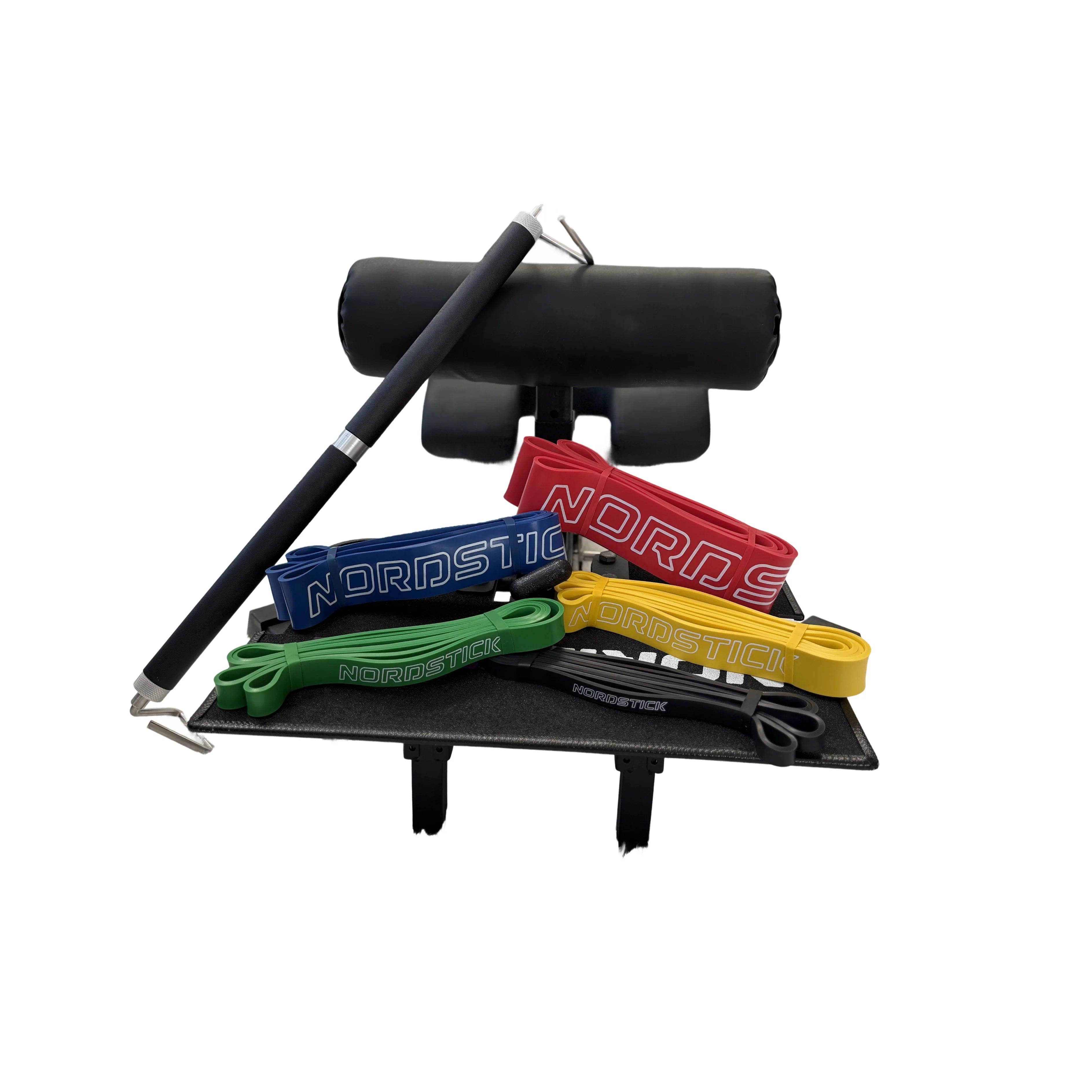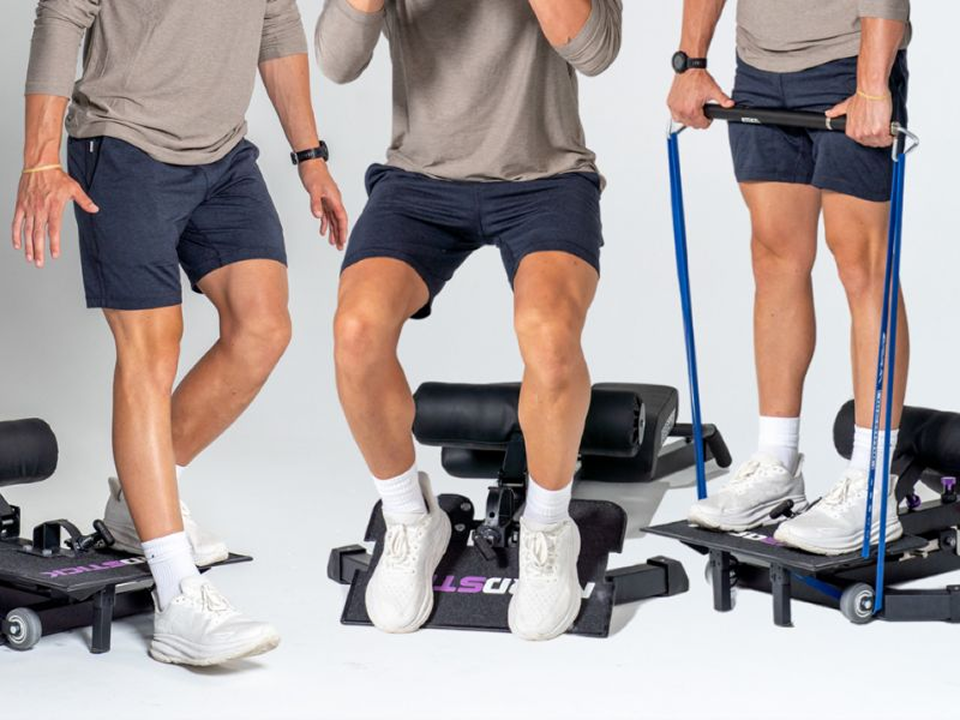Building strong quads is essential for enhancing both strength and performance, providing a solid foundation for a variety of athletic endeavors and everyday movements. Whether you're aiming to achieve well-developed upper legs or simply seeking to improve your overall leg workout routine, understanding the basics of quad anatomy and effective exercises is crucial.
In this guide, we'll walk you through how to grow your quads, focusing on easy-to-follow exercises, correct techniques, and common mistakes to avoid. You'll discover the best quad exercises, like foot-elevated split squats and heel-elevated goblet squats, that you can perform at home or at the gym. Let's dive into this journey of quad growth and empower you to achieve your fitness goals confidently and efficiently.
Key Takeaways
- Focus on compound movements: Exercises like squats and lunges are essential for building quad strength, targeting multiple muscles for greater growth and power.
- Progressive overload is key: To see continuous quad growth, gradually increase your resistance or volume over time, challenging your muscles to adapt.
- Balance strength with mobility: Incorporating flexibility and mobility work ensures your quads perform efficiently, reducing the risk of injury and enhancing athletic performance.

Before You Get Started
Understand Basic Quad Anatomy

The quadriceps, commonly referred to as the quads, are a powerful muscle group located at the front of your thigh.
They are composed of four distinct muscles: the rectus femoris, vastus lateralis, vastus medialis, and vastus intermedius. These muscles work in harmony to perform crucial movements such as knee extension and hip flexion, playing a pivotal role in activities like running, jumping, and squatting.
The rectus femoris is unique as it crosses both the hip and knee joints, contributing to both knee extension and hip flexion. Understanding these four quad muscles helps in targeting them effectively during workouts.
By focusing on exercises that engage these muscles, you can achieve better quad development and enhanced athletic performance. When you incorporate exercises like squats, lunges, and leg presses into your routine, you ensure balanced muscle growth and a well-developed lower body.
First Steps to Stronger Quads
Growing bigger quads begins with selecting the right exercises. Start with foundational moves that target your quad muscles effectively.
Foot-elevated split squats and heels-elevated goblet squats are excellent for beginners and require just your body weight or minimal equipment. These exercises allow you to focus on your form and build a strong base before progressing.
Incorporating multi-joint exercises like the front squat helps engage multiple muscle groups, enhancing overall muscle growth. Remember to maintain proper foot position—feet shoulder width apart—and keep your torso upright to avoid unnecessary strain on your knee joint.
It's essential to listen to your body and adjust your range of motion based on your flexibility and strength levels. By doing so, you minimize the risk of knee pain and promote sustainable quad growth. Consistency and gradual progression are key to achieving well-developed upper legs.

Technique Fundamentals for Quad Exercises
Mastering the correct technique is crucial in quad exercises to maximize their effectiveness and prevent injury.
When performing exercises like foot elevated split squats or heels elevated goblet squats, start by ensuring your feet are shoulder width apart to maintain stability. As you descend into the squat position, lean forward slightly to keep the weight balanced over your front foot.
This helps target the quad muscles more precisely. Ensure your front knee doesn't extend beyond your toes to avoid unnecessary stress on the knee joint. For exercises such as leg extensions, maintain control throughout the movement to engage the quad muscle fully.
Keep your upper body upright and engage your core for stability. Incorporating proper breathing techniques, such as exhaling on exertion and inhaling during the lowering phase, aids in maintaining form. By focusing on these fundamentals, you can enhance quad activation and promote muscle growth effectively.

Top Exercises for Bigger Quads
Best Quad Exercises for Beginners
Starting your quad-building journey with beginner-friendly exercises lays a solid foundation for muscle growth. The slant board squat is an excellent starting point, enabling you to isolate the quad muscles effectively while maintaining optimal posture and depth. Focus on a proper foot position on the slant board to emphasize the quads.
The body weight squat is also effective because it helps develop basic strength and muscle endurance in your quads and other stabilizing muscles. Ensure your feet are hip width apart and maintain an upright torso to engage the correct muscle groups.
Additionally, try incorporating foot elevated split squats to improve balance and unilateral strength. This exercise targets each leg independently, addressing any muscle imbalances.
Remember to start with light weights or just your body weight, gradually increasing the load as you become comfortable with the movements. These exercises will pave the way for more advanced quad workouts as you progress.

Progressing Beyond the Basics
Once you’ve mastered the basics, advancing your quad workouts involves incorporating more challenging movements and varying your routine.
Transition to using weights with exercises like the barbell front squat, which targets the quad muscles while engaging the core and upper body.
To further challenge your quads, incorporate compound exercises like Bulgarian split squats, which not only build strength but also improve balance and coordination.
Pay attention to your foot position, ensuring your knee goes over your toe for optimal quad activation. Additionally, increase the intensity of your workouts by reducing rest intervals between sets or incorporating super sets.
As you progress, listen to your body and adjust the weight and volume accordingly to continue building muscle. This strategic approach will facilitate continuous improvement and help you achieve bigger quads over time.

Creating an Effective Quad Workout Routine
Setting Up Your Routine
Crafting a well-rounded quad workout routine involves balancing exercises, volume, and recovery to optimize muscle growth.
Start by scheduling quad-focused workouts 2-3 times a week, ensuring adequate rest between sessions to prevent overtraining and allow for muscle repair. Incorporate a mix of compound exercises like the Bulgarian squat for overall muscle development, alongside isolation exercises such as leg extensions to target specific quad muscles.
Vary the number of sets and repetitions to challenge your muscles; for strength, aim for 3-5 sets of 4-6 reps with heavier weights, while hypertrophy goals should focus on 3-4 sets of 8-12 reps with moderate weights.
Warm up effectively with dynamic stretches and light cardio to prepare your muscles and improve ankle mobility. Finish with static stretching to enhance flexibility and aid recovery. Tailor your routine to your fitness level and goals, adjusting as you progress to maintain continuous quad development.
Common Mistakes to Avoid
One frequent error is neglecting proper form, such as allowing the knees to cave inward during squats, which can lead to knee pain and strain on the knee joint. Always maintain correct alignment by keeping your knees aligned with your toes.
Another mistake is overloading the legs without building a foundation of strength, which can compromise form and increase the risk of injury. Ensure a gradual progression in weight to build strength safely.
Skipping warm-ups is another common oversight; always prepare your muscles with dynamic stretches to prevent strains. Additionally, neglecting recovery days can hinder muscle growth and lead to overtraining.
Lastly, focusing solely on quad exercises can create muscle imbalances; incorporate exercises that target the hamstrings and inner thigh to ensure balanced leg development. By avoiding these pitfalls, you’ll enhance your workout effectiveness and longevity.

Maintaining Your Progress
Sustaining your progress in quad development requires consistent effort and strategic adjustments to your workout routine. To keep your muscles challenged, periodically change the exercises, sets, and repetitions in your routine.
Incorporating new exercises like the leg press, sissy squat, or varying the angles and foot positions in your current routine can stimulate different muscle fibers and prevent plateaus.
Additionally, focus on progressive overload by gradually increasing the weight or resistance you use over time. This method encourages continuous muscle growth and strength improvements.
Nutrition also plays a critical role; ensure you're consuming enough protein and calories to support muscle repair and growth. Incorporate recovery strategies such as adequate sleep, hydration, and stretching to maintain muscle health and prevent injury.
Finally, track your progress by recording your workouts, which can provide motivation and highlight areas needing adjustment. By implementing these practices, you’ll effectively maintain your quad growth and overall leg strength.

Conclusion
Growing your quads for strength and performance is a journey that requires dedication, proper technique, and a well-structured routine. By understanding the basic anatomy of your quad muscles and starting with foundational exercises, you can build a strong base.
As you progress, integrating more advanced movements and adjusting your routine will help continue your muscle development. It's essential to avoid common mistakes such as neglecting form or overtraining, which can hinder progress and lead to injury.
Remember, maintaining your progress involves strategic changes, proper nutrition, and consistent effort. Whether you're training at home or in the gym, focus on exercises that engage the entire muscle group for balanced growth. With these guidelines, you can confidently work towards achieving bigger, stronger quads, enhancing both your athletic performance and everyday movements. Keep challenging yourself, remain consistent, and enjoy the benefits of a well-developed lower body.
FAQs
How do you build quads fast?
Building your quads quickly requires a focused approach that combines effective exercises, optimal nutrition, and sufficient recovery. Begin with high-impact exercises like slant board squats, leg press, and lunges that target multiple muscle groups, including the quads.
Incorporate variations like foot elevated split squats and heels elevated goblet squats to maximize muscle engagement. Aim for a higher volume of sets and repetitions with moderate to heavy weights to stimulate muscle growth.
Ensure your form is precise to prevent injury and facilitate maximum quad activation. Complement your workouts with a protein-rich diet to support muscle repair and growth, and stay hydrated to enhance performance and recovery.
Prioritize rest days to allow your muscles to recover and grow, as overtraining can stall your progress. Implementing progressive overload by gradually increasing weights will keep your muscles challenged. Consistency is key, so maintain a regular workout schedule and track your progress for continuous improvement.
How do you increase the size of your quads?
Increasing the size of your quads involves a combination of targeted exercises, proper nutrition, and consistent progression. Focus on exercises that specifically target the quad muscles, such as squats, leg extensions, and hack squats.
These movements emphasize knee extension, which is crucial for quad development. Incorporating isolation exercises like leg extensions can help you focus directly on the quad muscles, enhancing their size and strength. Ensure that your workout routine includes both compound and isolation exercises to work all four quad muscles effectively.
Nutrition plays a vital role, so consume a diet rich in protein and calories to support muscle growth and repair. Implementing progressive overload—gradually increasing the weight or resistance in your workouts—ensures continuous muscle adaptation and growth.
Adequate rest and recovery time are essential to allow the quads to repair and grow after workouts. By consistently applying these strategies, you can effectively increase the size of your quads.
Do quads take long to grow?
The time it takes for quads to grow varies from person to person, influenced by factors such as genetics, workout consistency, and nutrition. Generally, noticeable changes in muscle size can take several weeks to a few months with consistent training.
Quads, being large muscle groups, tend to respond well to progressive overload and high-volume training. Regularly incorporating effective exercises like squats, leg presses, and lunges in your routine can accelerate muscle growth.
It's crucial to maintain proper form and gradually increase the intensity of your workouts to stimulate muscle hypertrophy.
Nutrition plays a significant role, so ensure you're consuming enough protein and calories to support muscle repair and growth. Recovery is equally important; allow your muscles adequate rest between sessions to prevent overtraining and promote muscle development. While patience is essential, sticking to a well-rounded program tailored to your individual needs will yield results over time.
Are quads easy to build?
Building quads can be straightforward for many, yet it depends on factors like genetics, dedication, and training methods. Quads are large, strong muscles that often respond well to resistance training. Incorporating compound exercises such as squats, lunges, and leg press into your routine can effectively target and stimulate quad growth. These exercises engage multiple muscle groups and facilitate muscle hypertrophy, essential for building bigger quads.
Consistency in your workout routine and progressively increasing the weight or resistance are crucial for continuous muscle adaptation and growth. Adequate nutrition, particularly a diet rich in protein, supports muscle repair and development, enhancing results. While some may find quad training easier due to genetic predispositions, others might need to focus more on technique and consistency.
Overall, with a well-structured program and commitment, building quads can be an achievable goal for most individuals. Remember, patience and persistence are key to seeing significant progress.









































Leave a comment
This site is protected by hCaptcha and the hCaptcha Privacy Policy and Terms of Service apply.